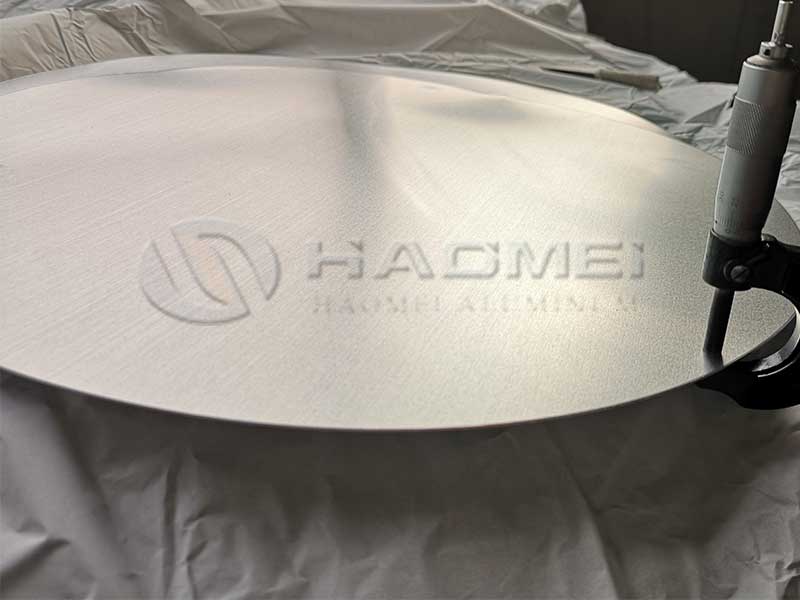Aluminum has long been a preferred material in the production of cookware due to its exceptional thermal properties, lightweight nature, and corrosion resistance.
What is Cookware Aluminum?
Cookware aluminum commonly refers to specially processed aluminum or aluminum alloys used to manufacture kitchen utensils such as pots, pans, baking trays, and other cooking implements. These alloys are designed to offer optimal strength, thermal conductivity, durability, and safety for direct contact with food.
Features of Cookware Aluminum
| Feature | Description | Benefits |
|---|---|---|
| High Thermal Conductivity | Aluminum has a thermal conductivity of approx. 235 W/m·K | Ensures quick, even heating to prevent hot spots and cooking burns |
| Lightweight | Density around 2.7 g/cm³ | Easier to handle cookware, reducing fatigue during usage |
| Corrosion Resistance | Forms a natural oxide (Al2O3) layer | Protects against rust, increasing lifespan and food safety |
| Non-Toxic | Aluminum alloys used are food-safe and compliant with regulations | Safe for cooking, no risk of harmful contamination |
| Formability and Machinability | Lightweight yet ductile aluminum can be cold- or hot-formed | Variety of shapes available in complex cookwares like waffle plates or grill sheets |
| Cost-Effective | Economical raw material with broad availability | Affordable cookware options with excellent lifespan |
Chemical Composition and Alloy Types Suitable for Cookware
Cookware aluminum is generally produced using alloys that balance strength and formability with thermal efficiency and safety. Below is a typical table outlining the chemical composition of common aluminium alloys used for cookware:
| Alloy | Si (%) | Fe (%) | Cu (%) | Mn (%) | Mg (%) | Zn (%) | Ti (%) | Others (%) | Characteristics |
|---|---|---|---|---|---|---|---|---|---|
| 3003 | 0.6-1.2 | 0.7-1.2 | 0.05 | 0.05-0.20 | 0.05-0.20 | 0.10 | 0.10 | Rem | Excellent corrosion resistance, medium strength; popular for cookware base |
| 1050 | 0.25 max | 0.40 max | 0.05 max | 0.05 max | 0.05 max | 0.05 max | 0.03 max | >99% Al (high purity) | Highly conductive, very lightweight, used for premium utensils |
| 1100 | 0.95 max | 0.95 max | 0.05 max | 0.05 max | 0.05 max | 0.05 max | 0.03 max | >99% Al | Excellent corrosion-resistant and formability |
| 6061 | 0.4-0.8 | 0.7 max | 0.15-0.40 | ≤0.15 | 0.8-1.2 | 0.25 max | 0.15 max | Includes Cr | Stronger, sometimes used for hard-anodized cookware or handles |
Physical and Mechanical Properties of Cookware Aluminum
| Property | Typical Value (e.g., for 3003 Alloy) |
|---|---|
| Density | 2.73 g/cm³ |
| Melting Point | ~ 640°C |
| Thermal Conductivity | 160 - 235 W/m·K |
| Tensile Strength | 130-180 MPa |
| Yield Strength | 55-90 MPa |
| Elongation at Break | 12-35% |
| Specific Heat Capacity | ~ 0.9 J/g·K |
Manufacturing and Finishing Processes
1. Rolling and Sheet Production
Aluminum billets are hot rolled into sheets or foils which ensure the flatness and thickness vital for cookware bases and lids.
2. Forming
The sheets undergo stamping, spinning, deep drawing, or extrusion depending on the type of cookware.
3. Surface Treatment
Most cookware undergoes:
- Anodizing: To create a harder, corrosion-resistant oxide layer.
- Non-stick coatings: Often applied onto aluminum surfaces to improve food release.
- Polishing: For aesthetic purposes or add gloss.
Applications of Cookware Aluminum
| Application | Description | Alloy Preference |
|---|---|---|
| Frying Pans & Skillets | Requires high thermal conductivity for even heat distribution. | 3003, 1050, and anodized 6061 |
| Sauce Pans | Lightweight yet durable pots utilize alloys with corrosion resistance | 3003, 1100 |
| Baking Trays | Flat sheets cleared of contamination and rolled to exact thickness | 3003, 1050 |
| Pressure Cooker Bodies | Need alloys with higher strength and heat tolerance | 6061 |
| Lightweight Camping Cookware | Emphasis on weight reduction, sometimes solid 1100 alloy or https://www.aluminum-sheet-metal.com | 1100 |
| Commercial Kitchen Equipment | Combines toughness with thermal performance. Includes backers for pans | 3003 |
Why Choose Cookware Made from Aluminum?
- Enhanced cooking experience due to lively heating.
- Health-safe due to minimal leaching if anodized or coated properly.
- Long-lasting with regular use due to corrosion-resistant properties.
- Affordably priced, ensuring accessible innovation in cooking design.








